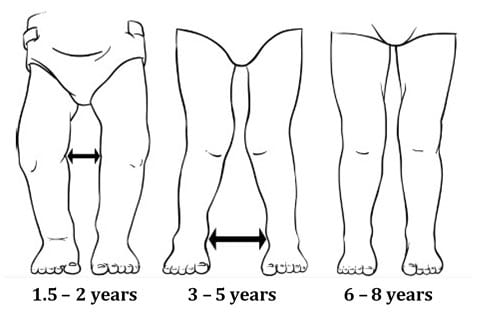Bowlegs
Bowlegs are one of the most common physical conditions that lead to parents consulting a doctor. This condition can be observed when one or both of a child’s knees curve slightly. In certain cases, the feet also curve inward. Bowlegs can also be observed when your child is unable to sit in meditation posture or W-position (the position of a child’s legs when they sit on their bums with their knees bent and their feet out to either side of their hips).

Causes
it is believed that during the final 1–2 month of a pregnancy, the unborn baby grows in size so much that it needs to fold itself up in order to be able to fit in the uterus. Therefore, we tend to find that infants naturally bend their elbows, hips, legs and feet and this condition may continue until the early stages of life after birth, and bowlegs is common in newborns.
Clinical Finding
Bowlegs or “Physiologic Bow Legs” is a condition most commonly found in newborns. Generally, bowlegs occur in both legs. However, in rarer case, one leg is more deformed than the other. When the body of a newborn grows, the condition usually corrects itself and the legs usually become straight by the age of two. By the age of three, the growing infants start to stand and walk with their knees closer together. Medically, this stage is called “Physiologic Knock Knee”. Around the age of seven to eight, the child’s legs will become normal. These are the natural development phases of leg bones, which are not straight in the beginning but will correct themselves naturally over time. However, there are several factors determining the degree of the bending. Heredity also plays an important role in shaping the severity of the condition.
However, there are several additional factors that can make the deformity worse and cause namely Blount’s Disease. These factors include learning to stand and walk prematurely and being overweight. Metabolism-related abnormalities, including Vitamin D deficiency, can also deteriorate the condition.
Treatment
It is important to observe whether the state of the condition matches the infant’s age. In most cases, bowlegs will correct themselves. There is no real scientific research indicating that braces or special shoes are significantly effective but surgery is needed to straighten the bones in the most serious cases. The appropriate age for surgery is around 3-4 years old and the legs will be in a cast for 6–8 weeks.